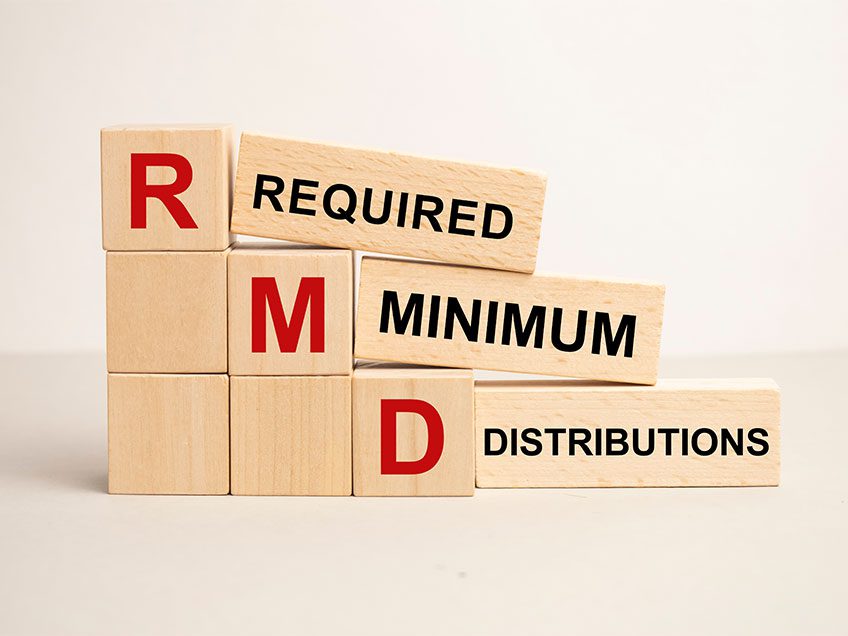New IRS Rules on RMDs: Key Takeaways and Implications

New IRS and Treasury Department Regulations on Required Minimum Distributions: Key Takeaways and Implications
Today, the IRS and Treasury Department unveiled long-anticipated final regulations on Required Minimum Distributions (RMDs). These RMDs are mandatory yearly withdrawals from individual retirement accounts (IRAs), 401(k)s, and other tax-deferred retirement plans. The new regulations clarify changes from the SECURE Act of 2020 and the SECURE 2.0 Act of 2022 and will take effect on January 1, 2025.
Background: SECURE Act and SECURE 2.0 Act
The SECURE Act, effective in 2020, made significant changes to retirement savings laws. Key changes included increasing the RMD age from 70½ to 72 and requiring most non-spouse beneficiaries to withdraw all inherited retirement account funds within 10 years. The SECURE 2.0 Act, signed in December 2022, further increased the RMD age to 73 starting in 2023 and to 75 starting in 2033, alongside other provisions to boost retirement savings and streamline plan management.
Key Highlights of the New Regulations
- Clarification on the 10-Year Rule:
A major point of confusion under the initial SECURE Act was whether beneficiaries of account holders who had already begun taking RMDs needed to continue these withdrawals yearly. The new regulations clarify that such beneficiaries must indeed continue taking RMDs annually, with some exceptions. This resolves the misunderstanding many had, believing they could avoid RMDs for nine years and only clear the account in the 10th year. - Summary of Comments and Explanation of Revisions:
For those looking for a detailed understanding, the “Summary of Comments and Explanation of Revisions” document is crucial. It explains the changes made and the reasons behind them, reflecting the IRS’s consideration of public feedback on the proposed regulations issued in February 2022. - Effective Date:
The new regulations will be effective from January 1, 2025, giving account holders, beneficiaries, and plan administrators time to adjust and ensure compliance.
Implications for Retirement Planning
- Impact on Beneficiaries:
Beneficiaries managing inherited retirement accounts need to understand the requirement for annual RMDs to avoid penalties and plan tax-efficient withdrawals. Consulting financial advisors is crucial for reassessing strategies under the new rules. - Adjustments for Plan Administrators:
Retirement plan administrators must update their systems to comply with the new regulations, inform account holders and beneficiaries about the changes, and ensure accurate RMD calculations and reporting. - Planning for Higher RMD Ages:
The increase in RMD age to 73 and eventually 75 allows individuals more time to grow their retirement savings tax-deferred. This change provides an opportunity to re-evaluate retirement income strategies and potentially reduce the impact of RMDs on taxable income.
Additional Considerations
- Potential Legislative Changes:
Retirement laws continue to evolve, and staying informed about potential legislative changes is important for adapting retirement planning strategies. - Importance of Professional Advice:
Given the complexity of the new regulations, seeking advice from financial planners, tax advisors, and retirement specialists is vital. These professionals can help navigate the new rules and optimize retirement outcomes. - Educational Resources:
The IRS and Treasury Department will likely offer additional resources and guidance to help individuals and plan administrators understand and implement the new regulations.
Conclusion
The final regulations on Required Minimum Distributions released by the IRS and Treasury Department represent a significant development in retirement planning. Clarifying changes from the SECURE Act and SECURE 2.0 Act, these regulations provide essential guidance for account holders, beneficiaries, and plan administrators. As the new rules take effect on January 1, 2025, proactive planning and professional advice will be key to maximizing retirement benefits and ensuring compliance with the updated RMD requirements.
Simple Summary of the New IRS and Treasury Department Regulations on Required Minimum Distributions
On July 19, 2024, the IRS and Treasury Department announced new rules about taking money out of retirement accounts like IRAs and 401(k)s. These rules start on January 1, 2025, and are based on laws called the SECURE Act and SECURE 2.0 Act.
Key Points
- 10-Year Rule: If you inherit a retirement account and the person who left it to you was already taking money out each year, you also have to take money out each year. Some people thought they didn’t have to take money out for nine years, but that was incorrect.
- When the Rules Start: The new rules start in 2025, giving everyone time to prepare.
What This Means
- For People Who Inherit Accounts: If you inherit a retirement account, make sure you know you might need to take out money every year to avoid fines. Talking to a financial advisor can help you understand what to do.
- For Companies Managing Accounts: Companies that manage retirement accounts need to update their systems and tell people about the new rules.
- Planning for the Future: The age when you have to start taking money out of retirement accounts is going up to 73 now and 75 later. This gives you more time to save money without paying taxes on it.
Extra Tips
- Stay Informed: Laws about retirement accounts can change, so keep up with the news.
- Get Advice: It’s smart to talk to financial experts to make the best choices for your retirement.
- Use Resources: The IRS and Treasury Department will have guides to help understand the new rules.
These new rules are important for making sure you get the most out of your retirement savings and follow the law.
Need Expert Guidance?
For personalized financial advice, connect with a professional today. Visit our “Find a Financial Professional” section to get started. If you prefer a personal referral for your first appointment, call us at 877.476.9723 or contact us here to schedule a meeting with a trusted and licensed independent financial professional.
🧑💼 Authored by Brent Meyer, founder and president of SafeMoney.com. With over 20 years of experience in retirement planning and annuities, Brent is dedicated to helping you secure your financial future. Discover more about his extensive expertise here.








